When it comes to the iconic, larger-than-life national parks that dominate bucket list itineraries, the majority of the big hitters are located in the western part of the United States. But the national parks east of the Mississippi are must-visit locations if you want to see some of the most amazing wildlife in the nation, as well as Seaside Mountains and marine keys.
After all, the American west’s landscapes—from Yosemite and Yellowstone to jaw-dropping attractions like Zion, Joshua Tree, and Rocky Mountain—have earned their illustrious name. However, don’t ignore the eastern portion of the nation either.
Given that the most visited park in the country is located on the border between North Carolina and Tennessee, it is not necessary to assume that the larger, more well-known parks in the west are any less popular or life-changing than the parks in the east.
The Best National Parks East Of The Mississippi
New River Gorge National Park & Preserve
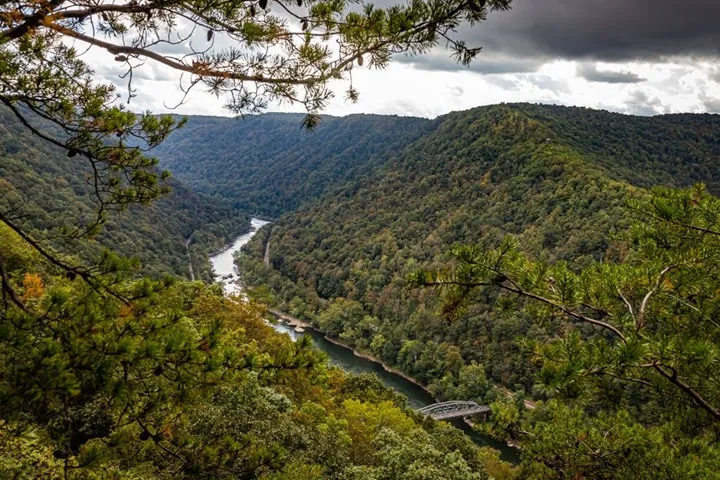
Nestled in the verdant valleys of West Virginia, this newest addition to the collection of national parks east of the Mississippi is a true show-stopper.
The name New River Gorge National Park & Preserve, which was recently upgraded from New River Gorge National River, comes from the powerful New River, which is somewhat of an oxymoron given that it’s one of the planet’s oldest rivers.
Similar to the Colorado River in the east, this massive river carves its way past picturesque communities like Beckley and Fayetteville. At the end, it forms a 53-mile canyon that resembles the Grand Canyon with its trees, offering some of the most exhilarating white water rafting experiences in the United States.
More than 70,000 acres of lush, hiking-and rock-climbing-friendly land are available for exploration on dry land. The 3,000-foot titan New River Gorge Bridge, which towers over the river below, is the park’s main attraction.
The third highest bridge in the country, it’s also the longest steel-span in the western Hemisphere, providing unparalleled views of this particularly panoramic national park.
Official website: https://www.nps.gov/NERI
Acadia National Park
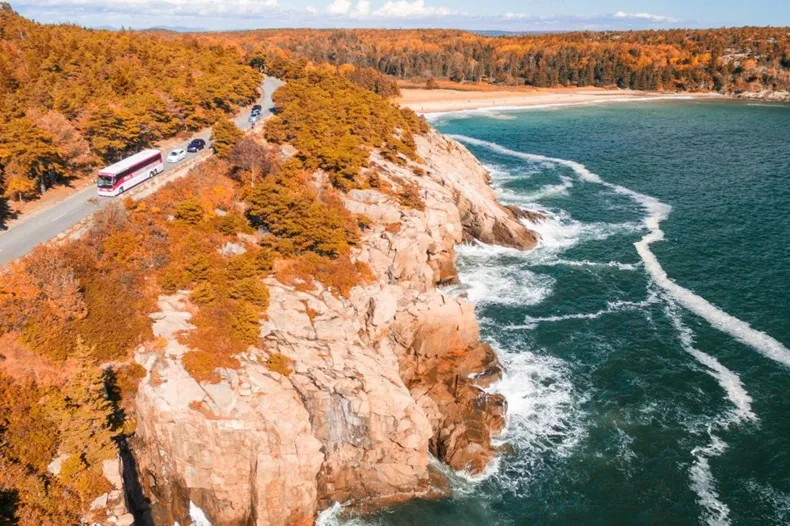
Acadia must be on everyone’s bucket list among all the east coast’s must-see parks. The oldest national park east of the Mississippi and one of the most popular, this marine beauty is a crown jewel on the Maine coast.
A pre-dawn drive up Cadillac Mountain, the park’s tallest peak and the first place in America to see sunrise each morning, and a stroll along the trails surrounding the serene stillness of Jordan Pond are just two of the many things to see at Acadia, a mecca of beach-side mountains, misty islands, craggy sea cliffs, and pristine ponds.
There are an astounding 125 miles of hiking paths in the park, most of which are dog-friendly, spanning from mountain tops to coastal coasts. If you happen to come during the summer, you should definitely eat at Jordan Pond House, which is well-known for its famous popovers.
Official website: https://www.nps.gov/acad/
Cumberland Island National Seashore
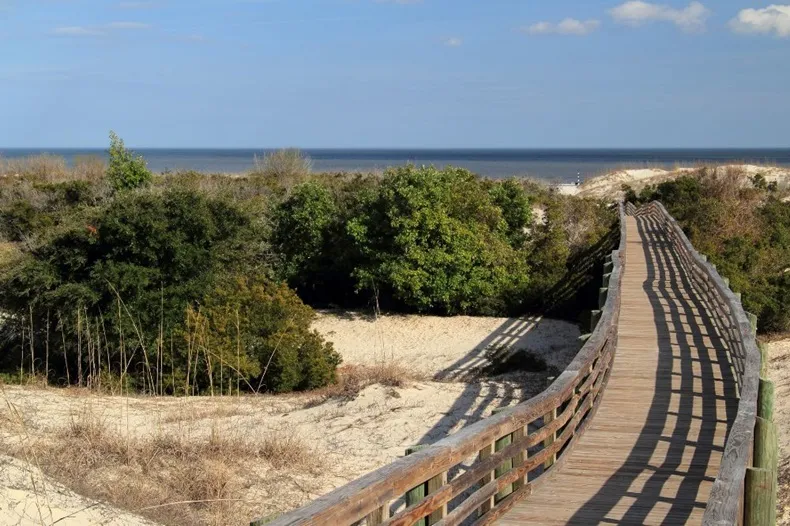
While Georgia does not have any of America’s 63 designated national parks, there are some national park locations worth visiting.
History and legacy are abundant in this Southeastern state, from the inventiveness of the Indigenous people at Ocmulgee Mounds National Historical Park to the unquestionable knowledge at Fort Pulaski National Monument. And then there’s Cumberland Island National Seashore, a remote, majestic beauty.
Cumberland Island, the largest and southernmost barrier island off the coast of Georgia, stands as a testament to the wonders found in national parks east of the Mississippi. It seems as raw as Jurassic Park — but instead of dinosaurs, there are wild horses.
This untamed park which stretches about eighteen miles and is only reachable by ferry from St. Mary’s on the mainland is a vast area of untouched wilderness that is brimming with historic buildings and immaculate coastline that appears to go on forever.
The wooded island has miles of shady hiking and bike routes that wind through different landscapes such as Spanish moss, wetlands, and towering dunes.
The hauntingly gorgeous Dungeness Mansion, the remains of the Carnegie family’s former opulent residence that they once utilized as a peaceful retreat, is a must-see. Currently, however, the dilapidated exterior serves as a favorite hangout for the most well-known inhabitants of Cumberland: wild horses.
Official website: https://www.nps.gov/cuis/
Great Smoky Mountains National Park
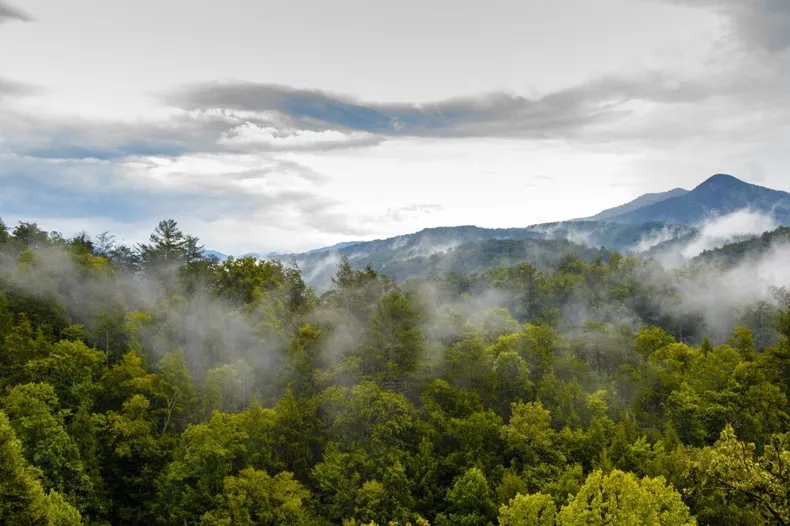
It’s hard to find more massive national parks east of the Mississippi than Great Smoky Mountains National Park, which receives over 14 million visitors annually.
For comparison, Zion receives about 5 million visits annually. The park is a haven for breathtaking drives and challenging hikes, but while many visitors just use it as a convenient stopover, it’s a magnificent landscape that deserves some deliberate time.
Clingman’s Dome observation tower, one of the park’s most popular attractions, offers breathtaking views of the surrounding mountain range, whose trademark mist and fog billow like smoke.
Then there’s Charlies Bunion, a strenuous eight-mile climb along the Appalachian Trail that culminates in a stone outcrop with a view of the majestic Smoky Mountains below.
Official website: https://www.nps.gov/grsm/
Mammoth Cave National Park
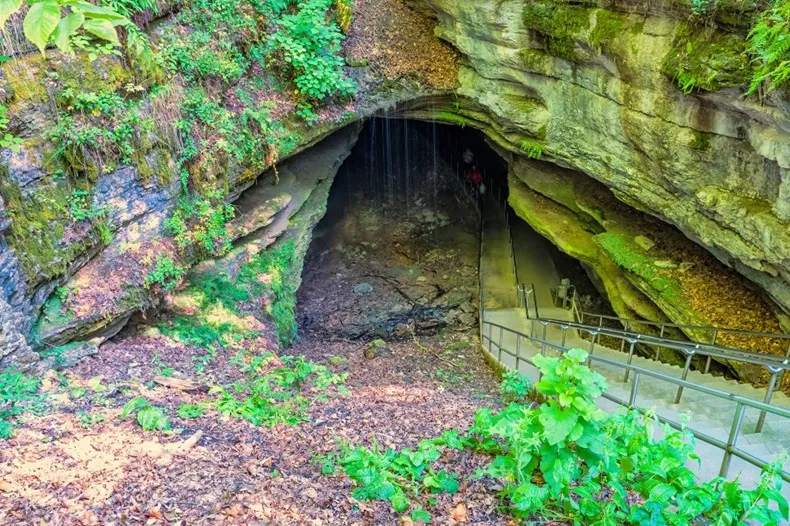
Beneath the surface of the Earth sits one of the most overlooked national parks east of the Mississippi. By far the biggest cave system on Earth is Mammoth Cave National Park, which lies tucked away beneath the undulating hills of Kentucky’s bourbon region.
The underground wonderland is a veritably endless maze of unique cave features, small passages, and interesting history, with more than 400 kilometers of recorded passageways (and counting).
For ranger-led excursions, just around 14 miles are available, yet that’s more than enough to fully explore the mysterious wonders of this underground destination.
There are many different tour options available; the most well-liked one is the Historic Tour, which explores the cave exploration’s early history.
Other options include Domes & Dripstones, which takes visitors into a sinkhole and down to a massive Dripstone feature known as Frozen Niagara, and Violet City, which lets daring visitors explore cavernous tunnels by lantern light.
Mammoth Cave offers plenty of surface activities as well, such as kayaking and canoeing on the Green and Nolin Rivers as well as more than 60 miles of hiking trails.
Official website: https://www.nps.gov/maca/
Isle Royale National Park
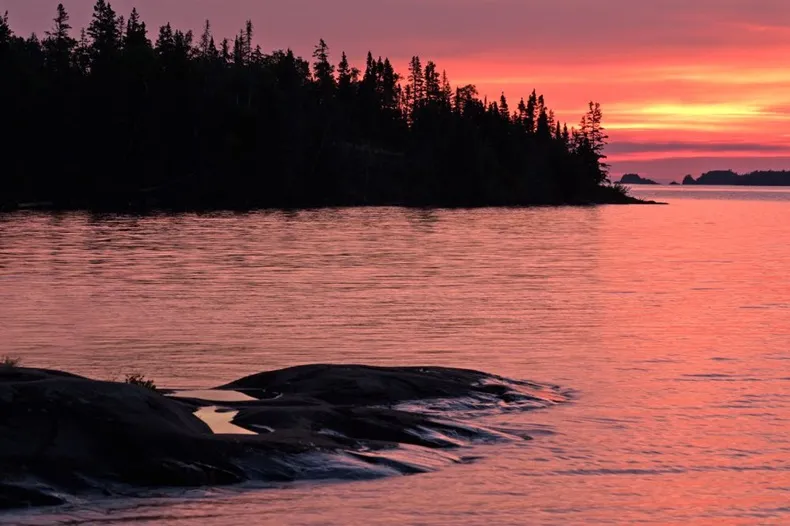
Isle Royale National Park, situated among the great national parks east of the Mississippi, is the epitome of all-natural seclusion and escape. It is a chain of isolated islands in the far north of Michigan’s Lake Superior.
With 400 islands total, the watery park is so far away and untouched that the only way to get there is by boat, taking three hours, and during the bitterly cold winter, it is inaccessible.
The center of the park is a 45-mile-long island where boats dock, accommodations and campgrounds are located, and trails meander through untamed wilderness.
Thanks to ten shipwrecks hiding under the frozen surface, Isle Royale is a secretive favorite site for freshwater SCUBA divers who are experienced dives. Along the countless rocky coves on the island, kayaking, canoeing, and fishing are other well-liked activities.
In terms of fauna, the park is well-known for having a distinct population of wolves and moose, which is an amazing illustration of the predator-prey balance in the most isolated area of the United States.
Official website: https://www.nps.gov/isro/
Dry Tortugas National Park
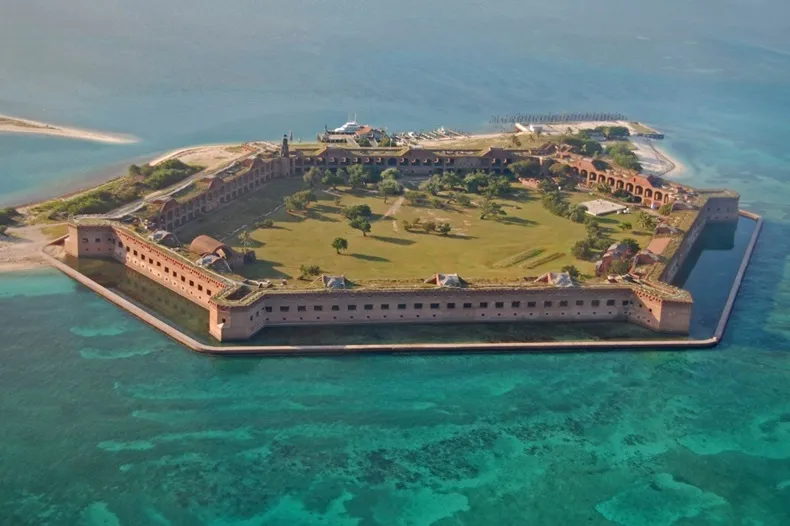
Like its tropical counterpart among the national parks east of the Mississippi, Dry Tortugas National Park offers extensive underwater exploration and remote islets. Only a few tiny keys remain on dry ground; the park is 99% water, roughly 70 miles west of Key West, and can only be accessed by a nearly three-hour boat voyage.
Out here, the main landmass is Garden Key, where the boat docks and the Civil War-era Fort Jefferson stand out like a brick beacon.
Originally constructed to guard the American South Coast during the War of 1812, it also functioned as a jail before being designated as a national park. Today, guests may stroll around the whole of this Gulf castle and then swim and lounge on the nearby beaches.
To explore further, swimmers may discover more about the local animals by following the underwater snorkel path that encircles the key.
Official website: https://www.nps.gov/drto/planyourvisit/basicinfo.htm
Cuyahoga Valley National Park
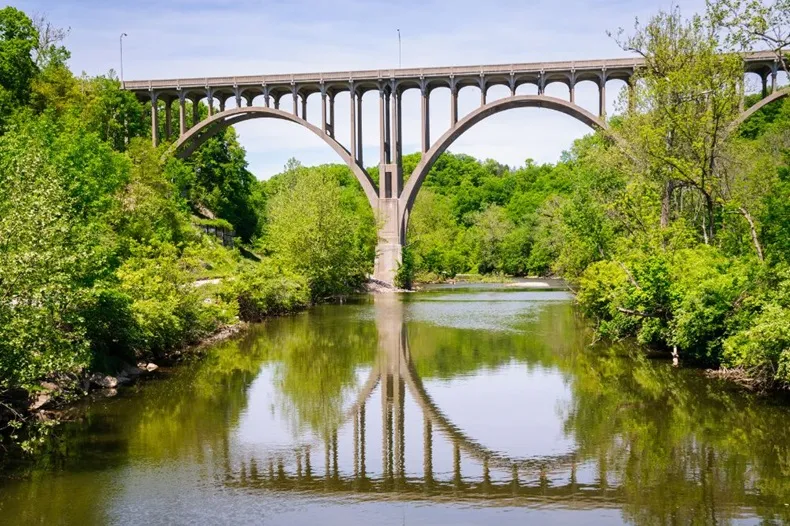
The Midwest may not appear to be the most logical destination for national park grandeur, but nestled between the Ohio cities of Akron and Cleveland sits one of America’s most unexpected treasures.
One of the most popular parks in the whole Midwest, it makes up for its lack of mountains and canyons with its stunning horseback riding paths, waterfalls, caverns, and woodland trails.
The historic Cuyahoga Valley Scenic Railroad, which winds through the park and provides themed trips like murder mystery dinners and family-friendly rides with Disney princesses, is a notable crowd-pleaser.
Official website: https://www.nps.gov/cuva/index.htm
Everglades National Park
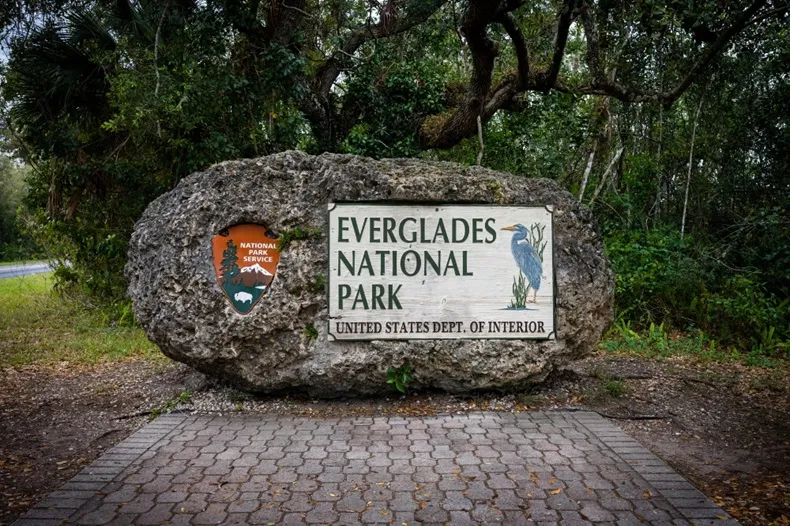
One of the most popular national parks east of the Mississippi is the Great Smoky Mountains, while Florida’s famous Everglades National Park is the biggest.
The biggest national park east of the Mississippi, it spans 1.5 million acres of untamed wetlands, a mangrove-lined coast, and intricate kayak routes, making it the third largest in the contiguous United States.
A few visitor favorites include the Anhinga route, a quick and simple circle route adjacent to the main east side entry that virtually guarantees a few up-close-and-personal alligator sightings. Of course, a park this big and sweeping can be intimidating to explore.
Proceed farther into the park to the Flamingo Marina area, where you may hire houseboats, kayaks, and canoes to paddle out into Florida Bay or up the Buttonwood Canal to Coot Bay.
The Everglades, in general, is the only site on Earth where crocodiles and gators coexist, and this is the greatest part of the park to witness both species.
Shark Valley is located on the park’s north side. It is centered by a lengthy paved loop that follows a stream that is home to many gators. The loop ends with a 45-foot observation tower that provides panoramic views of the River of Grass in all directions.
Although it is possible for tourists to walk the entire 15 miles of the path, there is a visitor centre with a tram and bike rentals available.
Official website: https://www.nps.gov/ever/
Shenandoah National Park
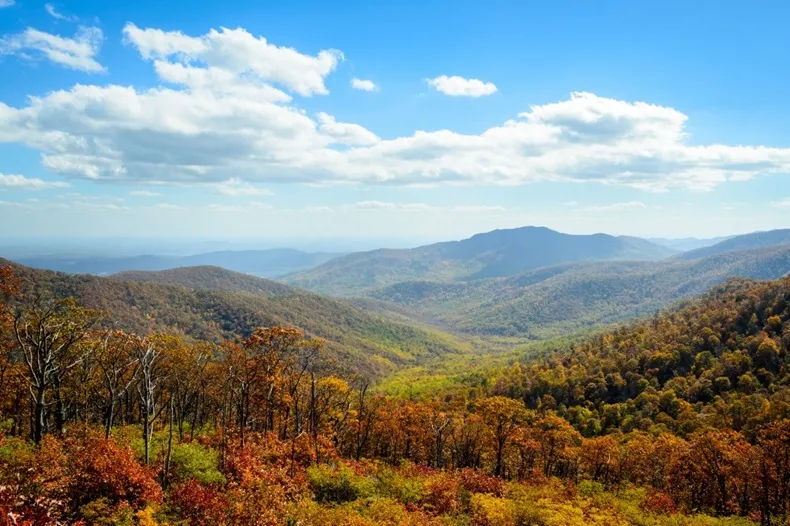
Shenandoah National Park, nestled among the breathtaking array of national parks east of the Mississippi, is located in Virginia, about 75 miles outside of Washington, D.C. Gorgeous treasures like bubbling waterfalls, gorgeous views, and flourishing wildlife abound in this splendor.
A section of the well-known Appalachian Trail, which passes through the park, is even open for hiking.Travel along the well-known Skyline Drive for breathtaking views from the vehicle.
This National Scenic Byway stretches 105 magnificent miles across the park. Beautiful mountain vistas and wildlife like deer, black bears, and wild turkeys are what you’ll witness. Take in the splendor of the stars at night under clear, black sky devoid of artificial light.
Official website: https://www.nps.gov/shen/
Biscayne National Park
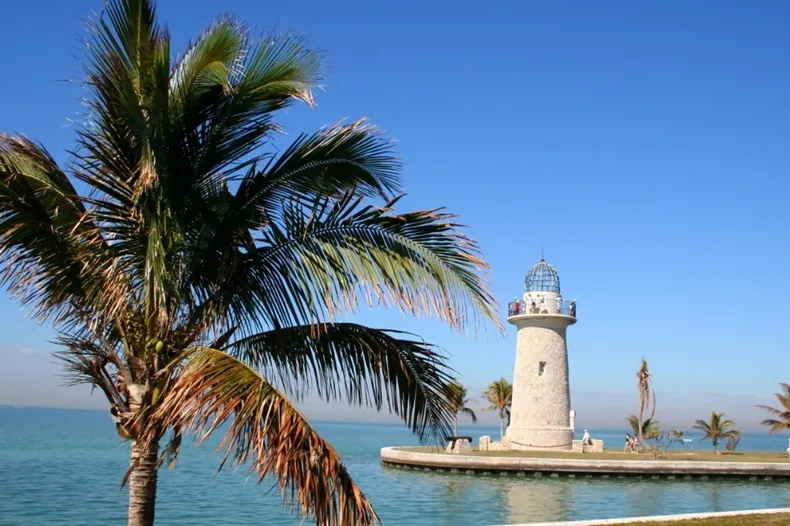
This hidden jewel is the only marine park in the country and is visible from the beach metropolis of Miami. It was established to preserve a portion of the nearly 50-key archipelago off the coast of South Florida.
Since the coral reef makes up a large portion of the park’s 95% protected aquatic area and is mostly only reachable by boat, it is advised to book tours in advance.
Snorkeling is possible in shallow waters, and fishing is permitted. If you’re short on time, Convoy Point is a terrific place for kids to visit the museum, see a documentary about the park’s many habitats, and play with bones and coral at a touch table.
Official website: https://www.nps.gov/BISC
Conclusion
The National Parks east of the Mississippi highlight the region’s remarkable natural and cultural diversity.
From the untamed swamps of Everglades National Park in Florida to the craggy coastline of Acadia National Park in Maine, these protected areas give visitors the chance to get up close and personal with nature, discover unusual ecosystems, and become fully immersed in the rich Eastern American cultural heritage.
Every park offers a chance for adventure and discovery, whether it’s trekking through old woods, kayaking on pristine lakes, or finding secret caverns. Thus, gather your belongings, go out on an adventure, and discover the breathtaking scenery and incredible tales that await in the National Park east of the Mississippi River.
